Listen to this article
Listen to this article
Loading
Play
Pause
Options
0:00
-:--
1x
Playback Speed- 0.5
- 0.6
- 0.7
- 0.8
- 0.9
- 1
- 1.1
- 1.2
- 1.3
- 1.5
- 2
Audio Language
- English
- French
- German
- Italian
- Spanish
Open text
kaneohe’s keys to kettle success. corps more than doubled its kettle income in 2018 campaign. by karen gleason –. the salvation army kaneohe (hawaii) corps more than doubled its projected kettle income in 2018. corps officers lts. aaron and meagan ruff—who arrived there in july 2018 fresh from officer training—brought a fresh perspective about both the corps’ service area and the broader significance of the red kettle campaign. “just ask,” said aaron ruff about securing kettle locations, acknowledging that while the salvation army has lost some locations due to store closures, other possibilities exist. whatever the outcome, asking could be the start of a new relationship within the community. this, he said, is their first tip for kettle success. that’s what ruff did one day when he walked into a whole foods store. the salvation army didn’t have a national contract with them and amazon had just purchased the chain. when aaron asked about placing a kettle there, the manager shrugged—he didn’t know what the policy was. he agreed to give the corps four saturdays, from 10 a.m. to 2 p.m.—prime time. the corps’ home league women, who lived nearby, volunteered their time at the kettles. another key to kaneohe’s kettle success was the expansion of its service footprint. the corps, which sits in the middle of a large area on oahu’s windward side, previously conducted its kettle campaign—and its outreach—centrally, away from the outlying regions. “we wondered: how can we build on what’s been happening in the past?” meagan ruff said. “we want to make our service footprint match our service area.”. the ruffs were further motivated after signing up shima’s, a locally owned grocery store in waimanalo—the only one—as a kettle spot. aaron ruff approached the manager, who said, “i’ve been manager here for eight years and no one’s ever asked. i’d love to have you ring.”. in another example of synchronicity—all the pieces falling into place—the corps had a long-time bellringer who lived in the area. waimanalo, an economically challenged area, turned in the third top kettle proceeds for kaneohe. “we went to them and that made a difference,” meagan ruff said. “it wasn’t just about the kettle money. the people there didn’t know they could receive services from the salvation army.”. the focus on outreach leads to the ruffs’ second tip for kettle success: year-round store and community engagement. “the red kettle campaign and the christmas push are more about pr and getting the army’s face out in the community than just fundraising,” aaron ruff said. he started his rounds with vendors in august to solidify kettle agreements for this year, but said the corps engages with vendors throughout the year. the local cookie corner store gives the corps 12 or more boxes of cookies every week. the ruffs drop off cookies at their kettle sites at least four times a year. they do so just before and after the season, and they include specific information on how the contributions impact the community; for instance, $10 will provide this many food boxes or backpacks. just that knowledge—letting people know exactly what the salvation army does with the money—can inspire people to do more. to help stay on target with their engagement, they developed a community calendar for the year. for each month, the ruffs determined what the outreach goal was. for instance, in january, they would deliver cookies as a thank-you for hosting a kettle; in february, they’d deliver cookies with a valentine’s theme. in march and april, the focus is camps, and so on. this year, the corps will host a harvest party, and they will visit their kettle sites with cookies and invitations to the party. they said they want to ensure people hear from them throughout the year—not just during kettle season. last year, the ruffs decided on a red kettle campaign kick-off event at the local mall, including the arrival of santa. they set up a single kettle and made just $350, but they talked to many more people about the salvation army. later people would see them and say, “hey, we saw you at the mall.”. “it set us up for success for the rest of the year,” said aaron ruff. “we want to partner with others to really help the community.”. “we talked to people born and raised in kaneohe who didn’t know there’s a salvation army here,” said meagan ruff. “we want more people to know we’re here before we do a huge fundraising event.”. their hopes are high for the 2019 season. as aaron ruff said, “in year two, we get to improve upon everything we did in year one.”.
Open context player
Close context player
Plays:-Audio plays count
kaneohe’s keys to kettle success. corps more than doubled its kettle income in 2018 campaign. by karen gleason –. the salvation army kaneohe (hawaii) corps more than doubled its projected kettle income in 2018. corps officers lts. aaron and meagan ruff—who arrived there in july 2018 fresh from officer training—brought a fresh perspective about both the corps’ service area and the broader significance of the red kettle campaign. “just ask,” said aaron ruff about securing kettle locations, acknowledging that while the salvation army has lost some locations due to store closures, other possibilities exist. whatever the outcome, asking could be the start of a new relationship within the community. this, he said, is their first tip for kettle success. that’s what ruff did one day when he walked into a whole foods store. the salvation army didn’t have a national contract with them and amazon had just purchased the chain. when aaron asked about placing a kettle there, the manager shrugged—he didn’t know what the policy was. he agreed to give the corps four saturdays, from 10 a.m. to 2 p.m.—prime time. the corps’ home league women, who lived nearby, volunteered their time at the kettles. another key to kaneohe’s kettle success was the expansion of its service footprint. the corps, which sits in the middle of a large area on oahu’s windward side, previously conducted its kettle campaign—and its outreach—centrally, away from the outlying regions. “we wondered: how can we build on what’s been happening in the past?” meagan ruff said. “we want to make our service footprint match our service area.”. the ruffs were further motivated after signing up shima’s, a locally owned grocery store in waimanalo—the only one—as a kettle spot. aaron ruff approached the manager, who said, “i’ve been manager here for eight years and no one’s ever asked. i’d love to have you ring.”. in another example of synchronicity—all the pieces falling into place—the corps had a long-time bellringer who lived in the area. waimanalo, an economically challenged area, turned in the third top kettle proceeds for kaneohe. “we went to them and that made a difference,” meagan ruff said. “it wasn’t just about the kettle money. the people there didn’t know they could receive services from the salvation army.”. the focus on outreach leads to the ruffs’ second tip for kettle success: year-round store and community engagement. “the red kettle campaign and the christmas push are more about pr and getting the army’s face out in the community than just fundraising,” aaron ruff said. he started his rounds with vendors in august to solidify kettle agreements for this year, but said the corps engages with vendors throughout the year. the local cookie corner store gives the corps 12 or more boxes of cookies every week. the ruffs drop off cookies at their kettle sites at least four times a year. they do so just before and after the season, and they include specific information on how the contributions impact the community; for instance, $10 will provide this many food boxes or backpacks. just that knowledge—letting people know exactly what the salvation army does with the money—can inspire people to do more. to help stay on target with their engagement, they developed a community calendar for the year. for each month, the ruffs determined what the outreach goal was. for instance, in january, they would deliver cookies as a thank-you for hosting a kettle; in february, they’d deliver cookies with a valentine’s theme. in march and april, the focus is camps, and so on. this year, the corps will host a harvest party, and they will visit their kettle sites with cookies and invitations to the party. they said they want to ensure people hear from them throughout the year—not just during kettle season. last year, the ruffs decided on a red kettle campaign kick-off event at the local mall, including the arrival of santa. they set up a single kettle and made just $350, but they talked to many more people about the salvation army. later people would see them and say, “hey, we saw you at the mall.”. “it set us up for success for the rest of the year,” said aaron ruff. “we want to partner with others to really help the community.”. “we talked to people born and raised in kaneohe who didn’t know there’s a salvation army here,” said meagan ruff. “we want more people to know we’re here before we do a huge fundraising event.”. their hopes are high for the 2019 season. as aaron ruff said, “in year two, we get to improve upon everything we did in year one.”.
Listen to this article











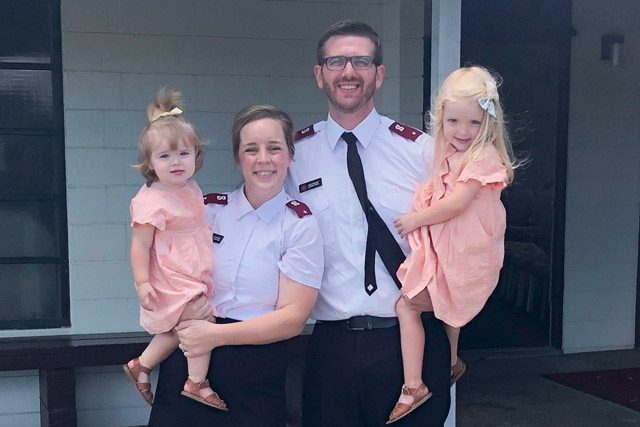
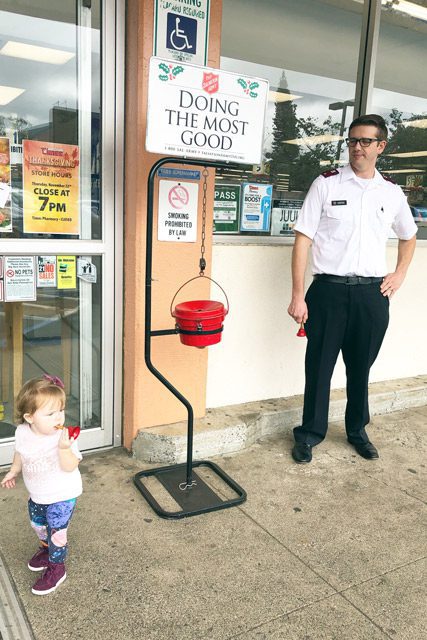
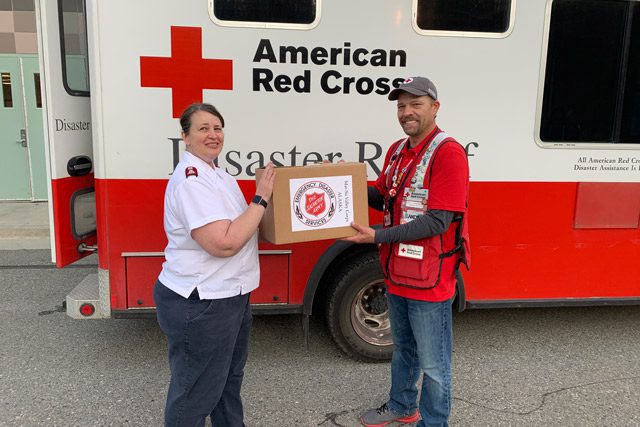

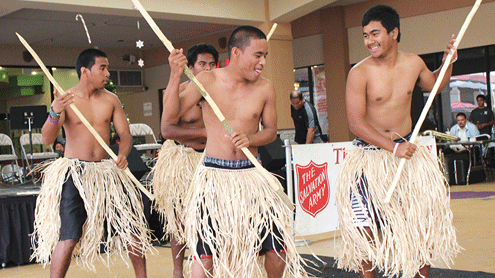
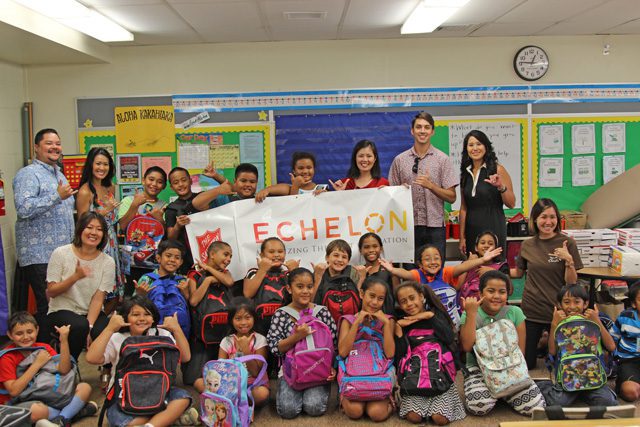
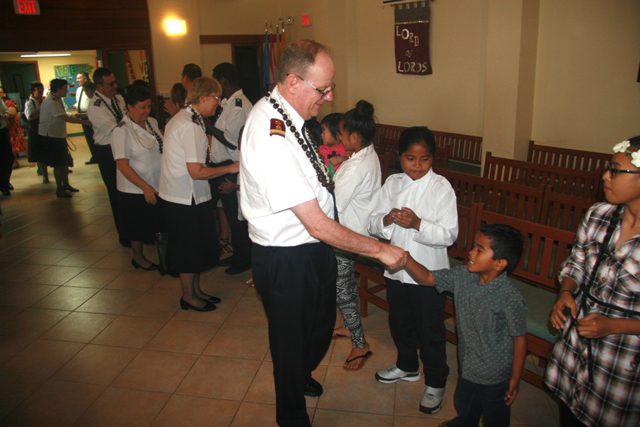
This is such a great story. It’s about year round interaction, building community and not just seasonal connections.
This is such a great story. It’s about year round interaction, building community and not just seasonal connections.